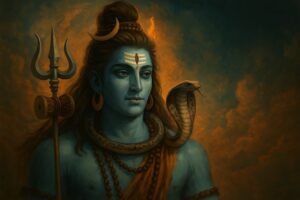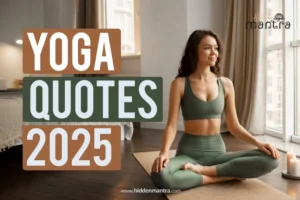Table of Contents
ToggleSiddhartha Gautama, generally known as Buddha, and Jesus Christ, generally known as the Son of God, are considered enlightened figures who transformed the religious contexts in which they would have existed. These two people, although living in different eras and geographies, share many similarities in their messages but opposed some aspects of organized religion.
People used to ask “Are Buddha and Christ the same?” but they are not. The two are different icons, representing two distinctive spiritual cultures, teachings, and historical settings. In the message of compassion, love, and a path to inner peace, it may seem somewhat similar; however, the two are not the same individual.
In this blog we are going to deal with the major differences and similarities of Buddha and Christ.
Similarities in Teachings of Buddha and Christ
The concepts of compassion, love, non-violence, and the path to enlightenment are both alike and different in Buddhism and Christianity:
In Buddhism, compassion is a central practice in the faith, karuna, and in Christianity, it helps to alleviate suffering. In Buddhism, love is a pure form of love that is unselfishly wishing others to be happy. In Christianity, love is deep, spiritual unity, bearing one another’s burdens, encouraging each other to do good works, and rejoicing and weeping with one another.
Buddhism was based on non-violence as it propagated the universal philosophy of love and kindness towards all living beings. In Christianity, Jesus not only preached love for one’s enemies but also to be benevolent to them and bless those who curse them.
Both Buddhism and Christianity emphasize the value of all life and believe that it is mankind’s responsibility to love and be compassionate towards all beings.
If anything, Buddha and Christ could well be two leaders whose morality and ethics represented different religious traditions but with enough similarities regarding compassion, non-violence, and calling to lead ethical lives. Both emphasized love and kindness toward others.
For the Buddha, this appears in the principle of Metta (loving-kindness) and Karuna (compassion, seeking the welfare of all beings). Similarly, Christ’s teachings on the virtues of love and forgiveness are detailed in the tenet of “love your neighbour as yourself” and “forgive others.” Both preached non-violence; however, while Ahimsa or non-harming was the philosophy of Buddha, for Christ, it was about turning another cheek when struck. Finally, both taught that greed, hatred, and attachment had to be transcended. This means that the Eightfold Path of Buddha is a disciplined lifestyle that leads to the end of suffering. Christ called for humility, charity, and purity of heart. Since both religious leaders came from different cultural and theological settings, they provided ethics-based systems aimed at fostering peace, charity, and moral integrity within everyday contexts.
In more than one way, Buddhism presents ideas on liberation, nirvana, and salvation that are different from those of Christianity: Nirvana and salvation Nirvana is characterized as a state of the highest enlightenment for people according to the teaching of Buddhism as an end to all suffering, while salvation is the deliverance from the sin and its consequences in the Christian context. Nirvana and Heaven Nirvana is a stage of desirelessness and apathy, while heaven is a stage of fulfillment and joy. Attainment
According to Buddhism, nirvana is achieved after one realizes that all existence is suffering and by following the instruction of the Buddha. In Christianity, one is saved from sin after asking for forgiveness, turning away from sin, and believing that Jesus Christ died for one’s sins.
Meaning of nirvana
The word nirvana comes from Sanskrit and means “extinction, disappearance” of the individual to the universal. Buddhist scholars have also metaphorically explained nirvana as “escape from the aggregates” or “free from that forest of defilements”
Similarities in Life Stories
There are some similarities in the life stories of both Buddha and Christ. Let’s dive in.
1. Death:
- Lord Buddha: Buddha passed away at the age of about 80, which is known as Mahaparinirvana. He died after eating a meal probably spoiled food offered to him by a blacksmith called Cunda. He was finally freed from birth and rebirth cycle (samsara) since he was fully enlightened.
- Christ: Traditionally, Jesus Christ died through a tormenting crucifixion at the age of 33. It was during the reign of Pontius Pilate, who governed when Roman administration reigned. His death was not natural but as a form of punishment due to the several claims of divinity he stated and the threat which he posed for both Jewish and Roman authorities. The death was considered sacrificial for the atonement of humanity’s sins in the plan of God through salvation.
2. Burial:
- Buddha: In the case of Buddha, his body was cremated following his death as was the Indian tradition. His remains were divided and put into stupas all over the areas. The items were now objects of worship for the believers because they represented his living spirit.
- Christ: After the crucifixion, the body of Christ was placed inside a tomb specially developed by Joseph of Arimathea. The burial conformed to the Jewish custom, and a large stone closed the entrance to the tomb. Three days later, however, according to Christian belief, Jesus Christ rose from the grave, and from then on, the tomb remained vacant-a classic incident of Christian theology that represents a victory over death and sin.
3. Posthumous Deification:
- Buddha: After death, Buddha was not quite deified in the sense of Christ. In his case, he is revered as an enlightened teacher who shows the way to liberation. Through the passage of time, various Buddhist devotional forms were developed and, within certain Mahayana traditions, even Buddha became conceived as a divine being, a universal, indeed cosmic figure transcending all humanity and representing compassion. His icon became central in the temple and devotional, the embodiment of enlightenment.
- Christ: Christ was deified instantly by his followers who proclaimed him as Son of God and Savior of the world. His resurrection from dead is considered that ultimate proof of divinity, and is worshipped as second person of Holy Trinity, i.e., Father, son, and Holy Spirit. Christianity teaches that Christ’s death and resurrection are the means by which Christians achieve eternal life. He, through deification, is in every way God and fully man.
4. Symbolic Meaning and Legacy:
- Buddha: The last exit from the physical world is represented by Buddha’s death and within it lies the final achievement: Nirvana. Nirvana epitomizes a situation where suffering ceases to be and cannot begin again. His legacy is that of a teacher; thus, his followers also strive to achieve enlightenment as he did.
- Christ: It is a redemptive sacrifice in which Christ’s death indicates forgiveness issues for people who believe in him and be promised eternal life. His resurrection represents victory over death, and he is worshipped as the eternal Messiah and Lord.
While the death of Buddha marks the consummation of his earthly sojourn and his entry into Nirvana, the death of Christ forms one stage in a greater divine plan for salvation, which is followed by his resurrection and ascension. Both figures can be tolerated as profound spiritual leaders, but their deification follows different theological paths: Buddha as an enlightened teacher and sometimes cosmic being, Christ as the divine Son of God central to the Christian faith.
Buy Buddha Hand Statues from Amazon
Differences in Beliefs and Practices
Different attitudes regarding the existence of a supreme being have had two categories: theism, the affirmation of the existence of a God or supreme being and atheism, denial of the existence of a God; and a middle ground attitude known as agnosticism, that is, where people say the existence of such a supreme being cannot be established.
Whereas both Buddhist and Christian practices help toward spiritual growth, the biggest area of difference lies in the emphasis on more ceremonial sacraments; it is actually the area on which Christianity appears to give its highest emphasis – such as Baptism and Communion.
Buddhism focuses more on meditation and mindful living, formative sacraments, or sacraments in themselves; ceremonies in Buddhism emphasize reverence and offering to the Buddha through chanting, offering, and pilgrimages. Christian ceremonies emphasize communal worship and celebration of key events in Jesus’ life.
Here are the Key points of comparison:
Key Central Practices:
The key central practices of Buddhism includes Meditation, chanting sutras, offering to the Buddha, pilgrimage, and practicing Right Ethics (Five Precepts).
While in Christianity it includes Praying, reading scripture, going to church, and receiving sacraments such as Baptism, Eucharist (Communion), and Confession.
Sacraments:
In Buddhism formal sacraments do not exist; some traditions may consider ordination a relevant ritual.
When it comes tp Christianity there are seven sacraments which include Baptism, Eucharist, Confirmation, Reconciliation, Anointing of the Sick, Holy Orders, and Matrimony.
Emphasis on Rituals:
Buddhism: Inner serenity is achieved through enlightenment, often through a personal experience, through mindfulness, compassion, etc.
Christianity: Develop a relationship with God through worship, prayer, receiving grace through sacraments.
Major Ceremonies:
The major ceremonies of Buddhism inlcudes Vesak (Buddha’s birthday), Kathina ceremony (offering robes to monks), Uposatha (observance day)
In christianity the major ceremonies are Christmas (Jesus’ birth), Easter (Resurrection), Pentecost (Holy Spirit)
Conclusion
Similarly, although Buddha and Christ embody teaching within areas of compassion, non-violence, and love, they are somewhat distinct spiritual traditions culminated out of their unique cultural and historical context.
Buddha teaches personal enlightenment through practices such as meditation and mindfulness, whereas the message of Christ centers around salvation through divine love and a relationship with God. Their lives and legacies also diverge from each other:
Buddha is the enlightened teacher, and Christ is the Son of God to be worshiped. In the final analysis, even though they preached similar virtues, Buddha and Christ are not alike but represent two very different approaches toward spiritual fulfillment. For more interesting topics and content, visit our page Hiddenmantra.










One Response
Brilliant article, well written and with some great and interesting comparisons!